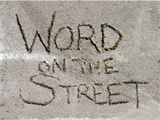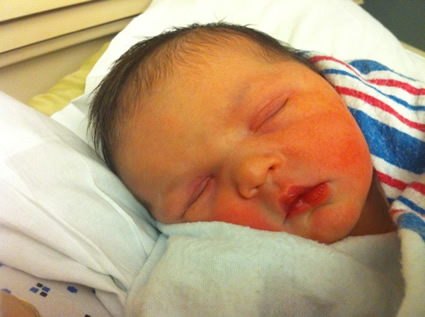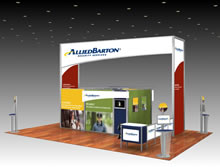
Word on the Street by Kevin Carty
Our People / Our Success
Many of you, who have been distributors, vendor partners, and industry friends for many years, have heard us speak about how the “heart and soul” of Classic Exhibits is its people. They are the key to our success.
To be successful in this business, we have to have attractive designs, quality products, and advanced manufacturing capabilities, but at the end of the day, its our people that make Classic a truly remarkable and great company. So please indulge me today as I share some information and some praise about our people.
Customer Service / Project Management
To most of you, they are the voice of Classic. This uniquely talented group is responsible for handling all quotes, order details, and job folders for our Production team. Unlike other companies where Customer Service representatives have very narrow duties and authority, the Project Managers at Classic are tasked with broad responsibilities. They are expected to answer your product-related questions, complete CAD details for orders, arrange shipping, and function as the final quality control check on your jobs.
To be a PM at Classic takes a very unique skill set. They have to be detail-oriented, efficient, imaginative, and charming. Very few of us have two of these characteristics, let alone all four. Classic PM’s are your “internal advocate,” or more specifically your “eyes and ears” throughout the entire process from the moment an order is turned over to Production until it leaves our shipping dock.
I am proud of how our group works as a team. They are always on the alert for ways to improve internal processes which not only makes their jobs more efficient, but also improves our ability to serve your requests.
Design Department
Design is often the first point of contact for many of you. Most of our competitors funnel everyone into Customer Service first. We don’t, which can present a challenge for our Designers. At Classic, we urge you to start with the Design Department on any orders that are not “as is” kits. As a result, a Designer at Classic might be working on 12-15 projects during a week. Your expectations, and the expectations of your client, are that each project will be unique and creative. And that the project will be delivered in 2-5 days (depending on size and scope).
After reading what I just wrote . . . that challenge can seem almost impossible on some weeks. But to their credit, they do it and they do it very well.
On top of all that, the Design Department must balance the demands of the Marketing Department as well. Design Monday, new kit renderings, animations, rental requests, and a wide variety of other design-related assignments are handled by Design. There is rarely, if ever, any down time in Design.
Production
I have often said and will continue to say that we have the absolute best Production staff anywhere. In these days of short turn times and client-driven last minute changes and unique challenges, they find a way to make it happen day in and day out. As a crew, they are continually striving to learn new techniques and cross train each other so we can remain efficient and profitable.
The vast majority of our Production staff has or will be celebrating ten plus years with the company. As a group, they care about Classic, and they care about the products our customers receive. They are faced with enormous challenges every single day, challenges that push them to engineer new solutions and develop new methods to handle our diverse product line. On any given day they are asked to solve difficult custom solutions, and to retain that knowledge so it can be replicated it in a week, a month, or in two years.
For those distributors and suppliers who have visited Classic Exhibits, you know. You have commented on our manufacturing capabilities, on our work ethic, on the positive energy of our Production team, and on the organization and cleanliness of our facility. I am proud of them and encourage more of our distributors to visit us and see what we see every day.
Accounting, Purchasing, Shipping, and Inventory Control
They pay the bills, pay the people, purchase the supplies, and keep us organized. They are the folks behind the scenes who rarely get “Top Billing” or much recognition outside of Classic Exhibits. But you know, as well as we do, that they are the glue that keeps us from falling apart.
Just like our Production team, these folks have been with Classic Exhibits for many years, and as Classic has grown and as we have added divisions over the years, they have been asked to do more and to keep us organized. We are fortunate to have employees in these positions who are smart, resourceful, and team players.
I often hear from colleagues who tell me that their Accounting, Purchasing, or Shipping Departments make their lives miserable. Rather than working with their colleagues, they create mini-fiefdoms within the organization. I can’t relate. At Classic, our team works hard to keep us on task and to follow procedures, but it’s never with an “us vs. them” mentality. It’s about making Classic better.
At the end of the day, there’s no substitute for a dedicated team of employees. Yes, we all want to get paid, but it should be about more than just the paycheck. At Classic, our team comes in everyday ready to work and always with an eye on how to make the company better and our customers happier. For that I am grateful every single day.
Be well and have a wonderful weekend!
–Kevin Carty
http://twitter.com/kevin_carty
http://www.linkedin.com/pub/kevin-carty/3/800/32a






